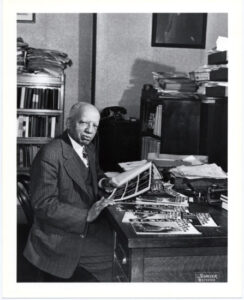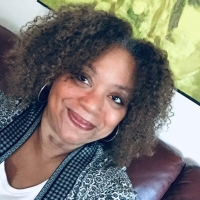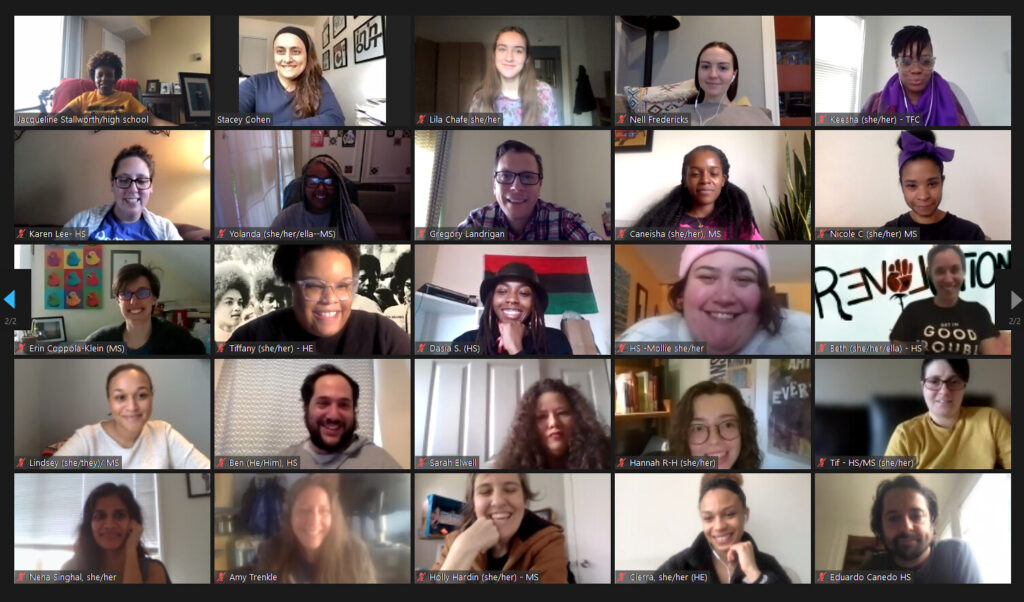 There is no one-size-fits-all way to run a study group. Some groups will be meeting in person, some online, and others a hybrid of the two. Some groups are composed of close colleagues and comrades while others will include new faces and voices. Some groups have a lot of experience thinking and talking about antiracist work in education while others might just be starting out.
There is no one-size-fits-all way to run a study group. Some groups will be meeting in person, some online, and others a hybrid of the two. Some groups are composed of close colleagues and comrades while others will include new faces and voices. Some groups have a lot of experience thinking and talking about antiracist work in education while others might just be starting out.
We do not expect you to follow these recommendations like a script.
They are meant to support your work, seed ideas, and provide you a set of strategies to adapt and build off of to fit your own setting and your group’s particular needs. The month-by-month prompts and suggestions are organized roughly according to the structure of the book. But this order is flexible. Does it make more sense for your team to swap out November’s prompt for December’s? Great. Do it! Does it make sense to draft an entirely different meeting structure for your February meeting? Great. Do it!
Facilitation
Communication
- Once you set a day and time for your group to meet, send a calendar hold/invitation so that participants can easily add it to their calendars. Sending week-before and day-before reminders is also useful, particularly if you will be meeting outside the school day.
- Please consider inviting one of the Zinn Education Project team to some of your meetings and events! From time to time, it would be wonderful to hop into one of your (online) meetings to listen and learn with your group — and especially if you are hosting a special event.
- Maintain a shared online space (Google folder or Padlet, for example) for meeting notes, resources, and materials. Keeping meeting notes (members can take turns being the notetaker) can be a wonderful way of documenting your work over the course of the year and promotes inclusivity by giving members a way to access key information even when they’ve had to miss a meeting.
- If a group member is absent from a meeting, make sure to follow up with them within a few days of the meeting — not to scold but to support them! Make sure they know where they can access meeting info and are informed about details of the next meeting. Given the incredibly taxing demands on educators’ lives, it is unrealistic to expect perfect attendance! But it is important to make sure group members feel that their presence is valuable enough to be noticed when missing.
Building Broad Participation in Meetings/Discussions
Without careful planning, study group discussions can fall into the same unhealthy patterns of the larger society, reflecting existing power relations, with some people feeling free to share their full selves while others are marginalized. This can manifest as some members talking a lot while others stay quiet; interrupting or rushing to respond to each other; or failing to carefully listen to and engage with all participants’ perspectives. Below are some strategies we’ve found helpful for creating more equitable and productive conversations.
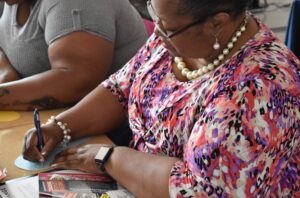 Provide time for processing through writing. Before discussing an article or prompt, give participants some time to write out their thoughts during the session. This quiet reflection time is grounding for the whole group. It gives shier, quieter members time to prepare comments and provides participants who are bursting with ideas a platform to express them outside of the discussion.
Provide time for processing through writing. Before discussing an article or prompt, give participants some time to write out their thoughts during the session. This quiet reflection time is grounding for the whole group. It gives shier, quieter members time to prepare comments and provides participants who are bursting with ideas a platform to express them outside of the discussion.- Ground conversations in a shared text. Perhaps you will decide to all read the same article/chapter for a meeting. Perhaps members will choose to read one or two pieces that appeal to them from each section. Either way, ask participants to share places in the reading (specific lines, not just general themes) that are resonating or raising questions for them. This can happen verbally or on a Padlet or Google Doc. Some groups might make sharing “golden lines” from the text part of their regular meeting structure, either as an opening or closing. However you do it, taking care to stay rooted in the common text can help keep the group focused and participating in one conversation, rather than spinning out into too many different directions.
- Rotate roles. There are a lot of roles — both formal and informal — that can be rotated to invite meaningful participation of more than just a few members. Consider rotating facilitation of meetings, so that each convening is led by a different member. You might ask the group to try to ensure that a different person offers the kick-off comment for each discussion (of an article, chapter, or prompt). Other roles for rotation might include note-taker and stack-keeper.
- Make space for feedback. Especially after the first few meetings, it is important to gather feedback from study group participants abouts what’s working — and if relevant, what’s not. It is probably best to invite these responses, in writing, at the end of a meeting through a Google Form or similar. Bring suggestions for changes to the meeting norms or structure back to the whole group at the next meeting. Just like in our classrooms, our study groups are always in process and up for revision.
- Create conditions for accountability. Every study group is made up of individuals from different backgrounds and with different experiences — which means eventually there will be moments of disagreement, mistakes, unexpected tangents, need for accountability, and some discomfort. To prepare, we suggest you start by co-creating space and discussion guidelines. Here are some examples and resources:
- 6 Pillars of a Brave Space developed by Victoria D. Stubbs paired with Brave Space by Micky Scottbey Jones.
- “Safe and Brave Spaces Don’t Work (and What You Can Do Instead)” by Elise Ahenkorah.
- Accountability resources compiled by Racial Equity Tools.
- Make room for diverse perspectives. It’s important for individuals, especially BIPOC (Black, Indigenous, People of Color) participants, to feel encouraged to share their opinions and challenge biases. But it is also important that they are not expected to carry the burden of educating others. Be mindful of talk time to give everyone the opportunity to add to the conversation. Here are some resources:
- “Tips for White Trainers Leading Multi-Racial Groups” by Training for Change.
- “Facilitating Difficult Race Discussions” by Derald Wing Sue.
- “Dangerous Discussions: Voice and Power in My Classroom” by Ursula Wolfe-Rocca.
- Caucus and Affinity Groups resources by Racial Equity Tools.
Meeting Prompts and Activities
Again, the ideas below are not a script. They are merely suggestions from which you might borrow and build upon.
August (or first meeting)
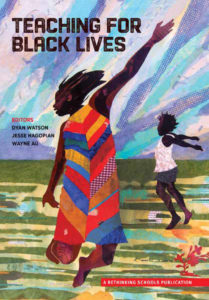
Opening writing/sharing
Give participants five quiet minutes to respond to the following questions in writing: What brings you to this study group? What hopes do you have for the group? Any fears? Next, ask everyone to read aloud a line or two of what they wrote. Sharing our writing with others can be scary. But it is good to set a norm of humility and openness early on about being vulnerable with our in-process thinking.
Reading/Discussion
This month, have the group watch Donovan Livingston perform his poem, “Lift-Off.” (poem starts at 1:00 min) Begin by asking everyone to share a line they loved, feelings that came up, and any questions it raised. Next, discuss what you believe is the thesis of his poem and what its implications are for your own teaching.
September
Opening writing/sharing
As a group, watch MK Asante deliver his poem, “Two Sets of Notes.” Afterward, give participants a chance to reread the poem on their own (p. 68-69) and quietly write for five minutes: How does Asante’s poem apply to you? When have you had to “take two sets of notes”? Do you currently? Do your students?
Reading/Discussion
Ask participants to arrive having read the introduction to Teaching for Black Lives. Before discussing the text, ask everyone to pull one powerful line to share with the group. Start the discussion by asking participants to share the line and why they selected it. Continue the discussion of the introduction with any of the questions from the Teaching for Black Lives Discussion Guide — p. 2.
October
Opening writing/sharing
Section Two of Teaching for Black Lives focuses on how Black history is taught in schools and classrooms. As a group, watch Clint Smith’s “A Letter to Five Presidents Who Owned Slaves While They Were in Office.” Afterward, give group members five quiet minutes to write: What is your reaction to this poem? What emotions and thoughts does it stir up for you?
Reading/Discussion
This month, consider having the whole group read “When Black Lives Mattered” (p. 96) as a common text. Before discussing the piece, go around and each share a memory of what you learned about the Reconstruction era in school. Use question 16 of the Teaching for Black Lives Discussion Guide as a foundation for your conversation. If you have time, a powerful additional activity would be to consult one of your school’s U.S. history textbooks to evaluate its account of Reconstruction against the one Sanchez lays out. How many pages/paragraphs are devoted to Reconstruction? What narrative is put forward?
November
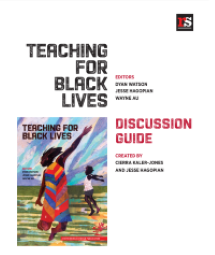
Opening writing/sharing
With a few meetings under your belts, it might be good to open this meeting with a check-in. Provide participants five quiet minutes to write: How has participating in the Teaching for Black Lives study group impacted your year so far? Are you noticing any changes — in yourself? Your practice? Your awareness? (Coordinators will complete a study group check-in during this month, as well.)
Reading/Discussion
This month, try breaking out into smaller groups of 2-3 for reading and discussion. Ask small groups to select one chapter from either Section One or Two to read together. You can use the Teaching for Black Lives Discussion Guide or build your own discussion prompts. When you come back together as a full group, ask each team to share ONE big idea that emerged from their conversation. (Make sure to limit the sharing out time to one minute or less! Share outs can drag on if not done briskly.)
December
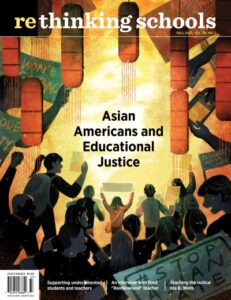 Opening writing/sharing
Opening writing/sharing
Ask participants to spend a couple of minutes paging through Teaching for Black Lives — starting with the cover! — focusing on the illustrations. Then give everyone a few more minutes to write. Possible prompt: Choose one image to write about. Why did you choose it? What story does it tell? How does it relate to what it means to “teach for Black lives”? Ask a few folks to share with the whole group what image they selected and why.
Reading/Discussion
This month, make the fall issue of Rethinking Schools magazine your common text. Consider asking everyone to read the editorial(s), then select two to three other articles to read by choice. In addition to discussing the content and relevance of the articles, you might consider: What is the value, as educators, of writing about our practice?
January
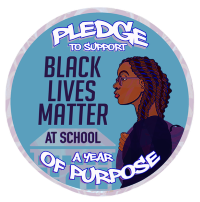 Opening writing/sharing
Opening writing/sharing
Give participants about 15 minutes for this month’s opening activity. First, ask everyone to read the Black Lives Matter at School Year of Purpose Self Reflection Questions.
- What is our school’s relationship to Black community organizing? Do we have relationships with local movement organizers? Do they see our school as a place that believes in their mission? Do they see our school as a place to connect with local families?
- How are school-wide policies and practices – especially disciplinary practices – applied across categories of race? Do problematic patterns emerge when we look at how policies are applied to Black students and when we also consider the intersections of gender, sexual orientation, and (dis)ability with Blackness?
- How are the voices, accomplishments, and successes of Black folx uplifted in my lessons, units, and curriculum? Rather than focus on singular events or individuals, does my approach highlight the everyday actions and community organizing that will lead to change?
- In what ways do our practices erase the histories of our students and prevent them from bringing their whole selves into the learning environment?
- How do I understand the role that local/state laws and policies have on the educational experiences of my students? What is my role in working to change policies, regulations, and practices that harm Black students and families?
Next, take at least five minutes to respond in writing to at least two of the questions. Ask each member to share ONE of their answers in small groups of three.
Reading/Discussion
This month consider having the whole group read “How One Elementary School Sparked a Citywide Movement to Make Black Students’ Lives Matter” (p. 22) in Section One as a common text. Use question #7 of the Teaching for Black Lives Discussion Guide to start brainstorming how your group might participate in the Black Lives Matter at School’s Week of Action, which will take place nationally during the first week of February every year.
February
(If your group is hosting a Black Lives Matter at School event [or series of events] for the Week of Action, you might need to push this meeting to March!)
Opening writing/sharing
Spend a few minutes reading about Carter G. Woodson and the founding of Negro History Week. Ask each group member to bring a golden line (powerful, provocative, or moving) back to the full group or post them on a Padlet.
Reading/Discussion
To engage with Section Three of Teaching for Black Lives, select at least one chapter to read together as a common text. Use questions from the Discussion Guide as a foundation for your conversation. After you have debriefed and shared, talk about how the section’s themes — gentrification, displacement, and anti-Blackness — apply to your district’s or school’s locale. What is the history of your neighborhood in terms of segregation and housing? How has the area changed over time? What role did white supremacy and racism play in those changes?
March
Opening writing/sharing
Have the group read Kelly Norman Ellis’ poem, “Raised By Women.” Afterward, spend a few minutes writing: Who were you raised by? And what did you learn from those formative people and influences? Ask everyone to read aloud one line from what they wrote. (See p. 311 for more ideas for this writing activity by Linda Christensen).
Reading/Discussion
This month, make the winter issue of Rethinking Schools magazine your common text. Consider asking everyone to read the editorial(s), then select 2-3 other articles to read by choice. In addition to discussing the content and relevance of the articles, you might consider: What’s the article about teaching and learning for social justice that you haven’t read but would like to? What’s the article you (individually or collectively) could write? (Most articles in Rethinking Schools are from K-12 educators! If you’re interested in submitting an article for publication, take a look at the submission guidelines and reach out to Julia.)
April
Opening writing/sharing
In the interview with Monique Couvson (formerly Monique W. Morris), “How K-12 Schools Push Out Black Girls” (p. 251), Couvson says,
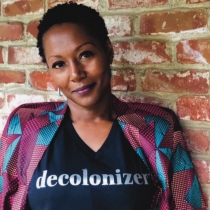
Dr. Monique Couvson
Schools can either reinforce dominant ideas that are present in society, or they can actively work to develop skill sets among young people to be critical participants in the process of developing the society they want to be part of and live in. There needs to be particular conditions in place: developing healing-informed responses to problematic student behavior and healing-informed classrooms in schools…
Ask everyone to take five minutes to respond to Couvson’s quote. In particular, encourage study group members to evaluate their school’s policies and practices — to what extent can they be described as “healing centered”? Share answers in small groups.
Reading/Discussion
To engage with Section Four of Teaching for Black Lives, select at least one chapter to read together as a common text. (We heard from our 2021-2022 study groups that many educators found “Baby Steps Toward Restorative Justice” [p. 277] provocative and useful.) Use questions from the Discussion Guide as a foundation for your conversation. After you have debriefed and shared, talk about how the section’s themes — Discipline, the Schools-to-Prison Pipeline, and Mass Incarceration — apply to your setting (classroom, school, district, institution).
May
Opening writing/sharing
In “Black Like Me” [p. 294], Renée Watson writes about feeling invisible at school. Referring to a racist teacher, “What if she really saw me?” and explains,
“Being seen — truly seen — is to feel that all parts of who I am are recognized…”
Ask everyone to choose a Black student (or any student from a historically marginalized identity) they’ve taught this year to write about. It could be a student with whom they’ve struggled, or one who’s always kind of blended into the woodwork, or one whom they’ve been worried about. Spend five minutes, in writing, attempting to meet Watson’s challenge — to really see this student — by writing a detailed description of what you know about them. Afterward, share any ahas or take-aways from this writing activity.
Reading/Discussion
To engage with Section Five of Teaching for Black Lives, select at least one chapter to read together as a common text. Use questions from the Discussion Guide as a foundation for your conversation. After you have debriefed and shared, talk about how the section’s themes — Teaching Blackness, Loving Blackness, and Exploring Identity — apply to your setting (classroom, school, district, institution).


